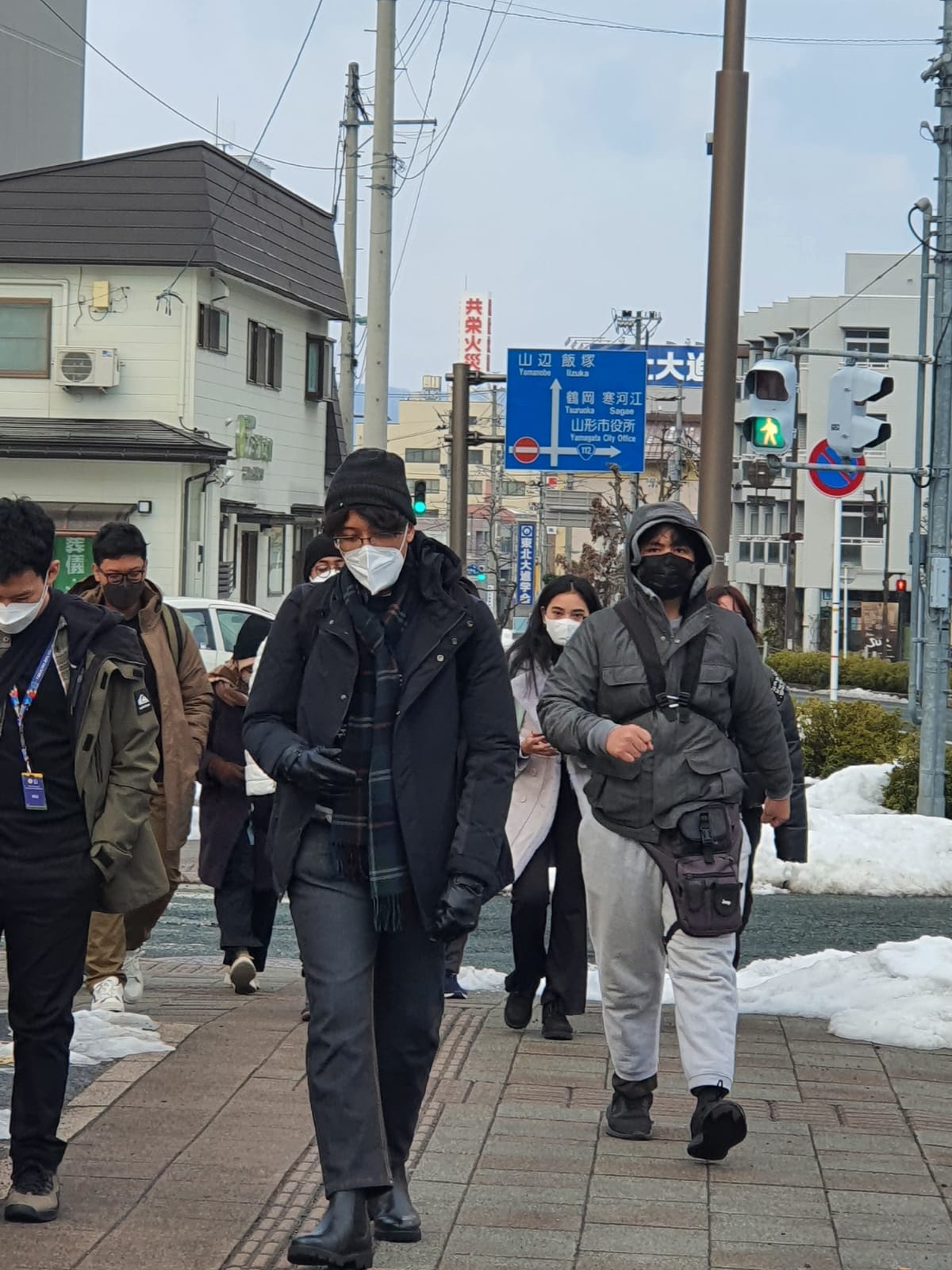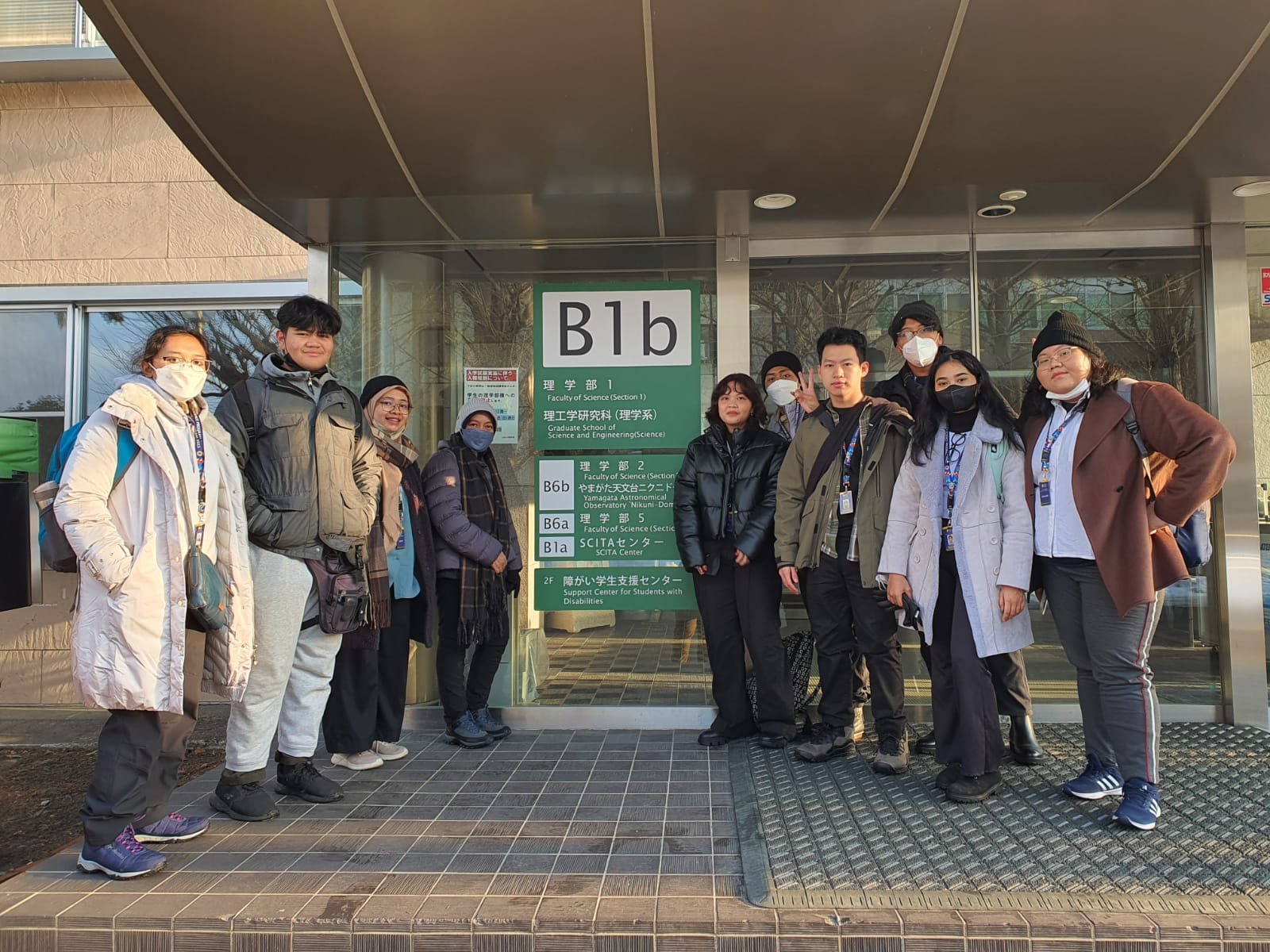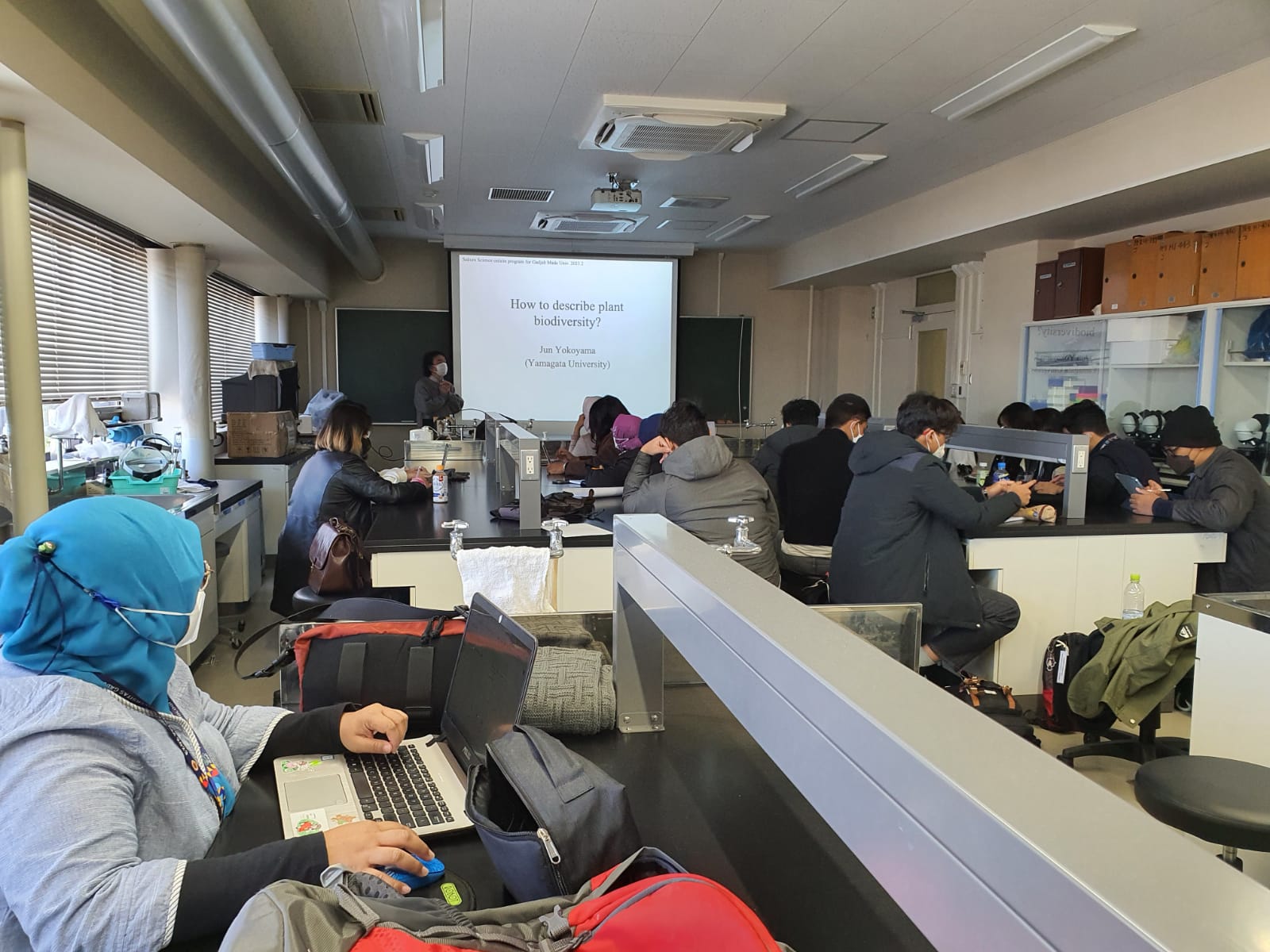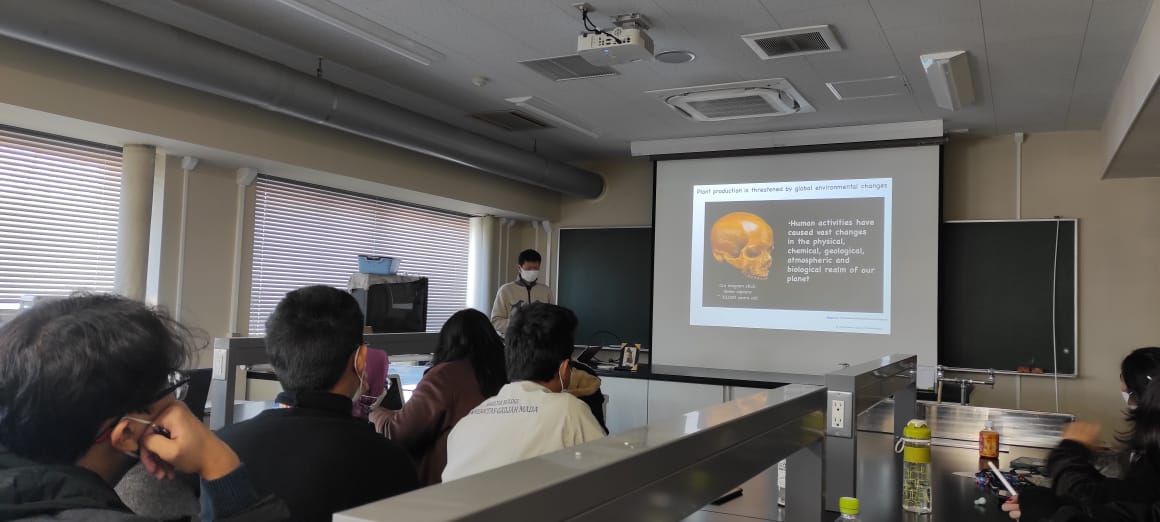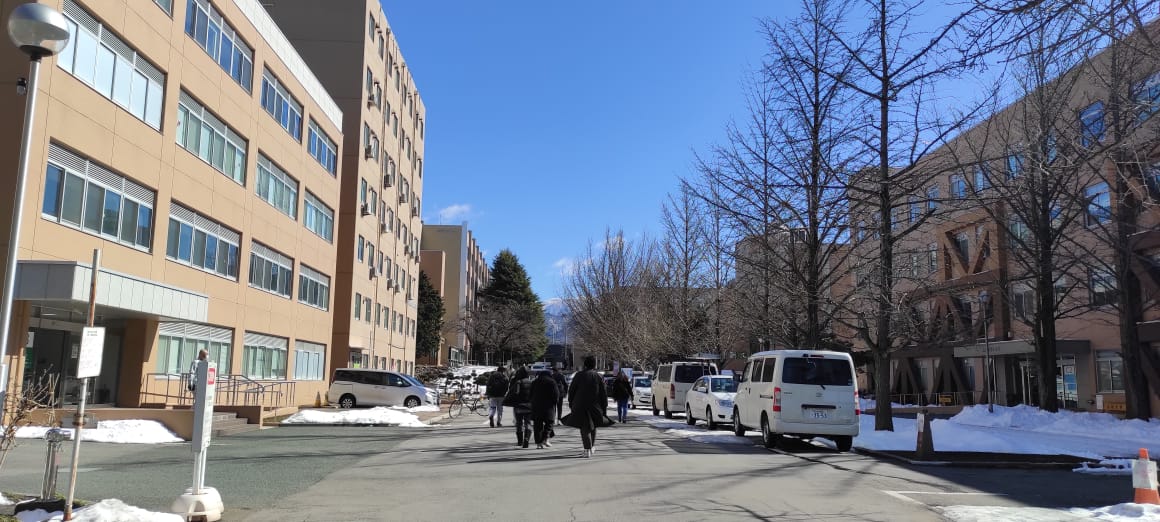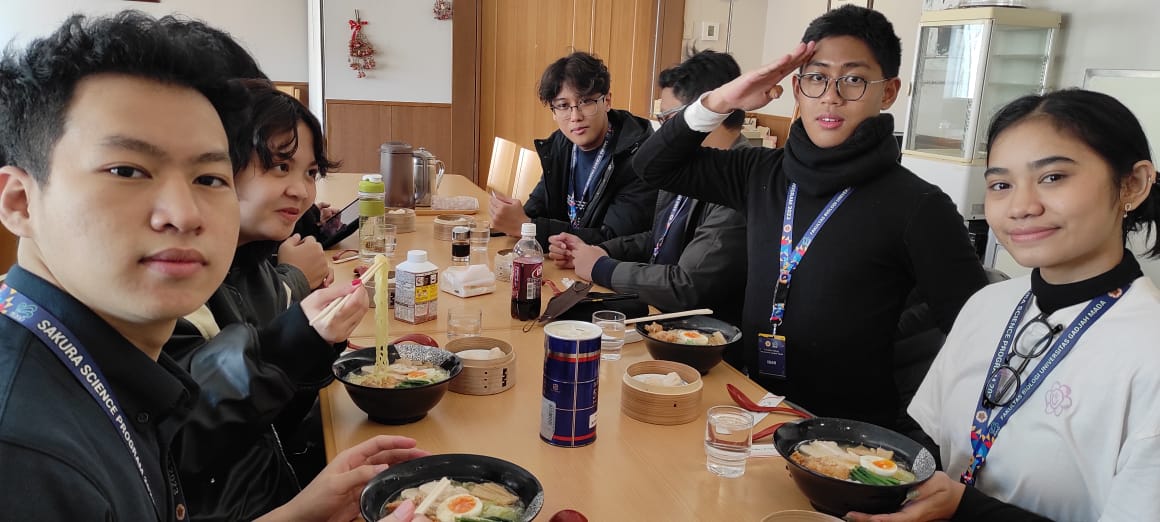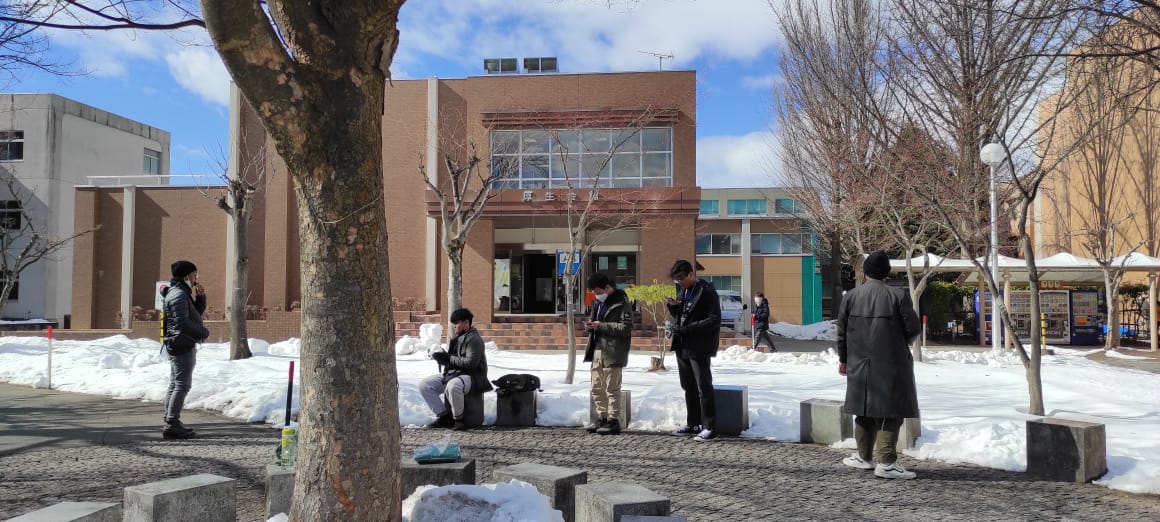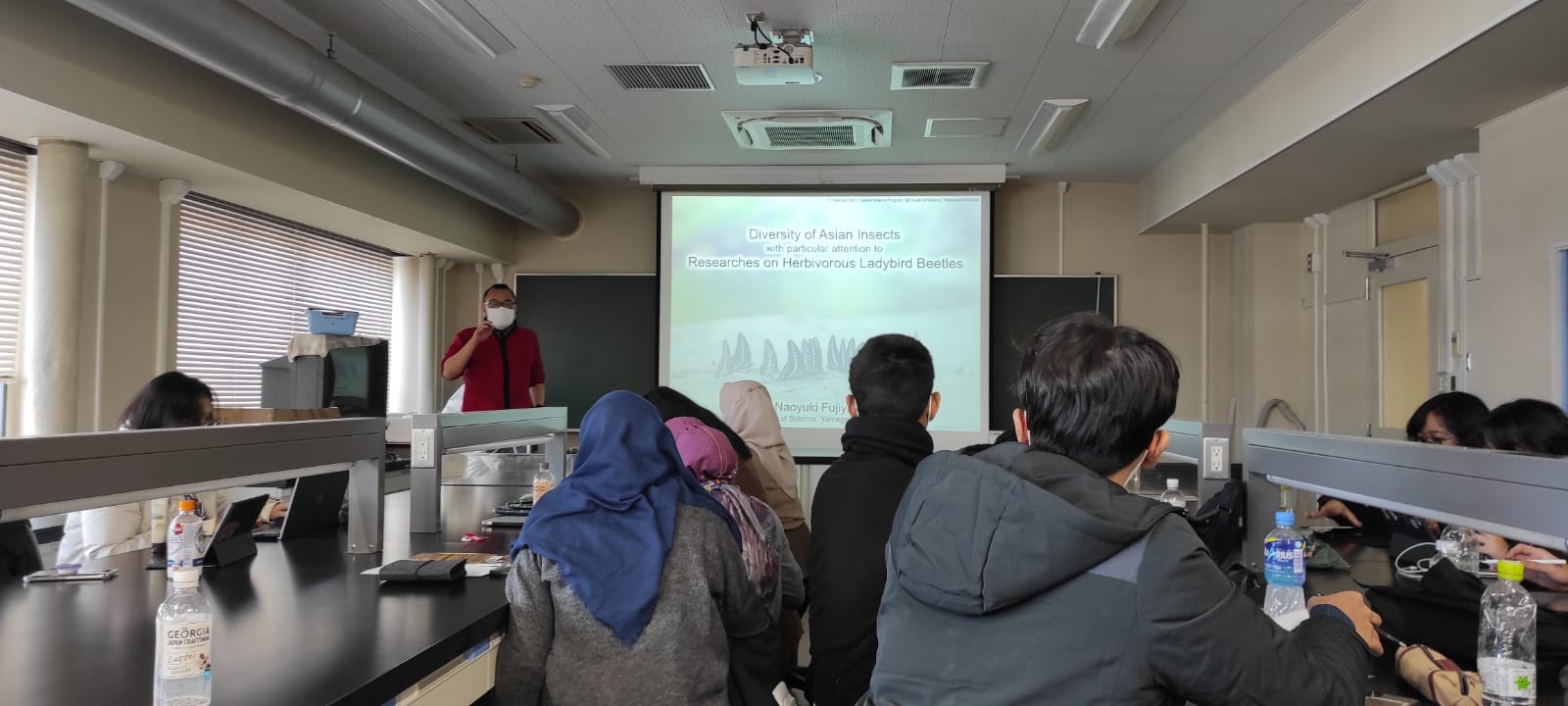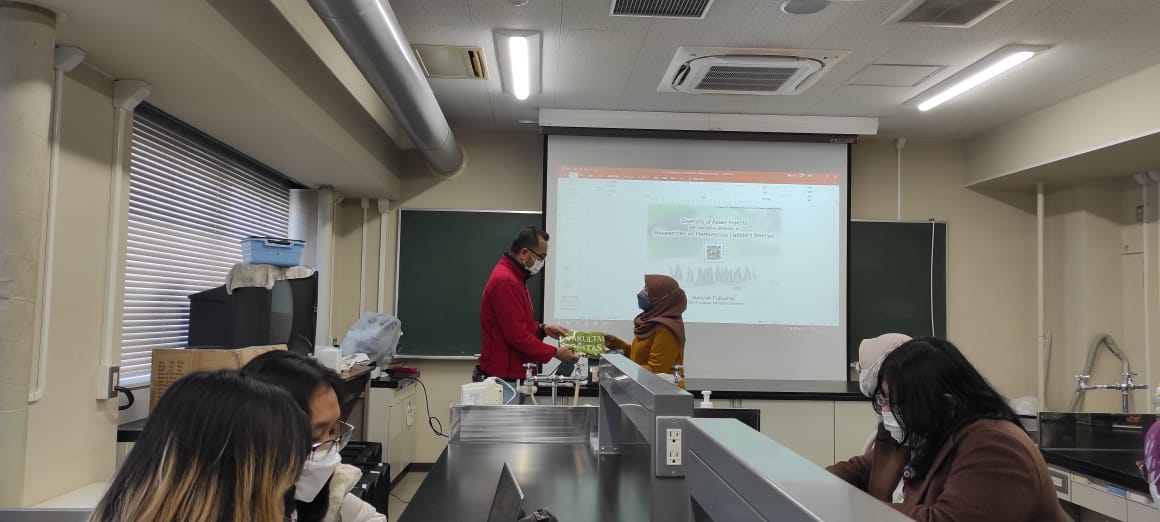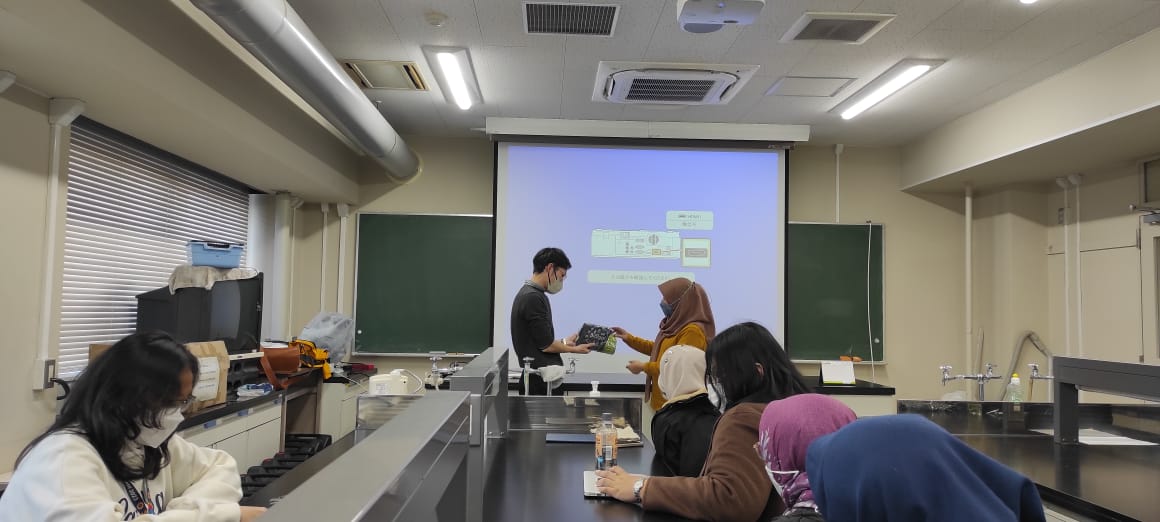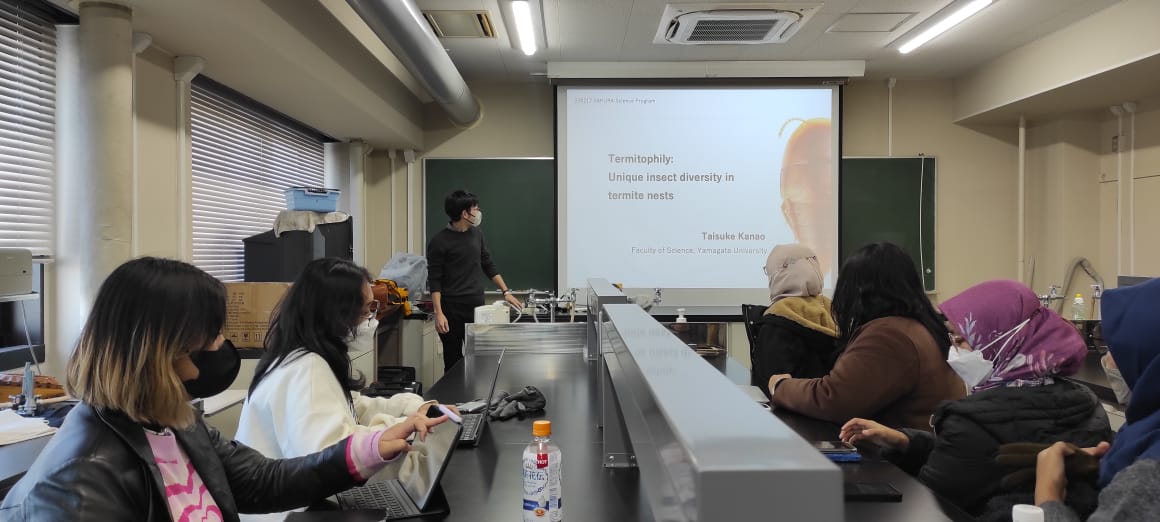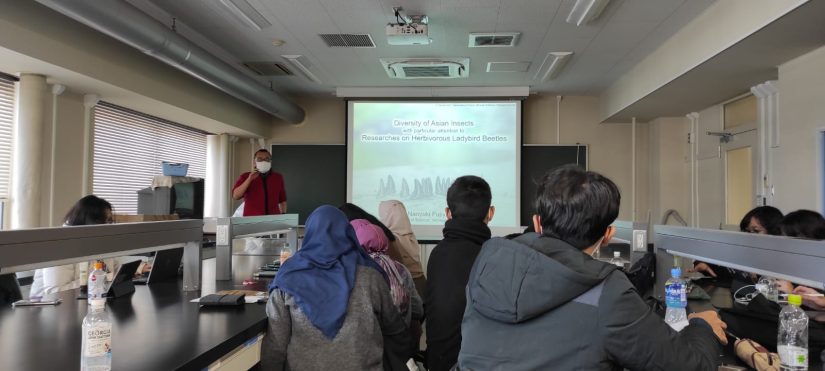
Sakura Science Program-Yamagata University-Daily Chronicle: Day 2
On a cloudy Friday (17/06/2023) morning, the students made their way to Yamagata University. That day’s agenda were four lectures by Professor Jun Yokoyama, Professor Yutaka Miyazawa, Professor Naoyuki Fujiyama, and Dr. Taisuke Kanao. Two lectures in the morning and two in the afternoon. Professor Jun Yokoyama was the first to deliver his lecture “How to Describe Plant Diversity”.
In his session, Professor Yokoyama described that traditionally the diversity of plants was usually described if they were useful for human use. Medicinal and edible plants are most illustrated and documented in antiquity. In modern times, new species are documented following a strict set of rules. Formally, these rules started with “Systema Naturea” by Carl Linnaeus. Introducing classification of the plant kingdom, the animal kingdom, stone classification. However, now if a new species would like to be described, one must: discover a new species, compare it to already well described species, selection of type species, name preparation, paper publishing, and peer review. Afterwards, Professor Yokoyama continued upon the various species concepts and cladistics. One of which is the phylogenetic species concept, which states that organisms which are descended from a common ancestor have traits which were derived from that common ancestor. Ending the lecture with which approach is required to procure data for phylogenetic analysis, molecular data from DNA and Proteins are required.
The second lecture was delivered by Professor Yutaka Miyazawa on the topic of “Introduction to Plant Molecular Physiology: Molecular Mechanism of Root Hydrotropism, an adaptive plant response to water deficit. He explained the phenomenon known as hydrotropism where plant tissues grow towards areas with a higher moisture gradient. Tropic processes other than phototropism and gravitropism are not wholly understood. As such, to study the mechanism of hydrotropism one must find what causes such a growth. By analyzing the contents of the growing tissue, patterns can be found. Through analysis of growing Arabidopsis thaliana roots, a few hundred genes responsible for the entire growth process have been found. Due to the large amount of work, it would take and experiment on all of them to find which gene was primarily responsible for hydrotropism. A different approach was taken. Mutants which didn’t display any hydrotropic growth were isolated and compared with wild type specimens. There existed two genes that were not expressed in the mutant type, further called MIZ1 and MIZ2. MIZ1 affects the growth of root stelae and external tissues. If absent, Arabidopsis thaliana roots are only affected by gravitropism; when expressed normally as in the wild type, roots will grow normally following a higher moisture gradient; when over expressed, roots will approach water at a much faster rate. Despite hydrotropism appearing in other plant species, the genes and responses which occur are wholly different to Arabidopsis thaliana.
Now after the finished the first half of lectures, we have our lunch in the campus cafeteria. We have hot ramen and shrimp dumplings, which very delicious and fit for the weather. After lunchtime, with all of us being satisfied with the delicious ramen meal, we went back to the Faculty of Science to proceed our next session.
Our afternoon session was opened by a lecture form Professor Naoyuki Fujiyama. The lecture was about the Asian insect’s Diversity, which included up to 3 main parts. Prof Fujiyama started his lecture with a question which region in the world that has the largest diversity of insect? is the species diversity of insects the highest in Asia?”, In which it follows with a temporary answer which is “uncertain” depend on how we perceived.
He then continues the lecture by explaining the factors that could affect the insects’ biodiversity. In some of his explanations, he told us that the larger the area, then the species would have much more diversity. The climate is also part of the factors that impact the insects diversity. For example, a tropic climate would contain a much more phytophagus species due to its host plant species diversity. After all of his explanations, he would then come back to his question to the students and then gave his new answer which explained that the insects diversity might be the highest in asia, due to the factors that could affect the diversity which is the size of an area, the amount of islands, the climate, the geological history, and the plant species biodiversity in those area.
On the second part of Professor Naoyuki Fujiyama’s lecture is the Indonesian diversity of the herbivorous ladybird beetles. His explanations indicated that the center of distribution of the herbivorous ladybug beetle is the tropics, and it originated from Africa. Moreover, the Cucurbitaceae is the ancestral host, and most of the many Asian species depend on Solanaceae. He concluded his lecture by explaining his case study of the herbivorous ladybug beetle and on what information we could know from the DNA sequence data. After Professor Naoyuki Fujiyama’s lecture, the students were given a ten-minute break before proceeding into the next session by Dr. Taisuke Kanao.
In Dr. Taisuke Kanao’s session, we learned about the termites as a decomposer, a pest, and a social insect. Furthermore, he added that almost 3100 species of termites is known. The social strata/caste of termites breaks down from the queen, king, worker, soldiers, nymph & alate. Each of the social class has their own task, from the queen in which she was tasked to lay eggs and regulate the colony by the pheromone. The king in which he mates with the queen, the workers in which they had to take care of the queen, eggs and larvae and collects food. And then there’s the soldier that protects the colony and lastly the nymph & alate in which they are the future queen and king. In between the explanation, Dr. Taisuke Kanao showed us a specimen of the termites’ queen to the students, and the size of it was surprising to the students as it can be compared to a human’s thumb.
Later on, Dr. Taisuke Kanao explains the guests’ term in the termite’s world, from the synectrons, the one that is persecuted by the termites as they are most likely to be the predator to the termites. The synoeketes, in which they are the guests that are ignored by the termites. And the synophilis which are essentially the “true guests” of the termites since they are highly integrated into host termite societies. After that, Dr. Taisuke Kanao continued the topic of phylogeny. The topic consists of the evolution of termitophily in Aleocharinae which explained that they evolved for at least 14 times. The convergent of morphology and host relationships, and the errors of the Aleocharinae systematics.
After each of the lectures has been said and done, the lecturers would given a souvenir from Yogyakarta and from the Faculty of Biology UGM, and then there would be a photo session afterward. The last lecture was lasted until 16:00 PM. Furthermore, the students would be given a break time until the time for dinner comes up at 17:30 PM. During this time, we had free time to going to Downtown, enjoy scenery or doing some shopping. (NAdh&Ibar)
